For Tracey Hairston, green home decor means two things. The interior stylist loves upcycling, thrifting furniture, and finding eco-friendly products. She’s really into vintage and second-hand items, which is great for the environment. Plus, she believes adding plants spruces up a room. And she has a ton of them!
Hairston, who describes her own impeccably stylish home as a “jungle oasis,” has insights for anyone interested in either definition of “green” decor – be it pro tips on finding the gems at your local thrift store or advice on how to keep plants alive and happy.
One of her biggest tips? Shop your own home before heading to the store. For all you know, the perfect piece that will tie everything together might be lying around in another room or in storage. If you need some sustainable home decor inspiration, here are some of Tracey’s thrifting secrets, decor tips, and advice for more effective plant parenting – and why she believes in the importance of talking to your plants.
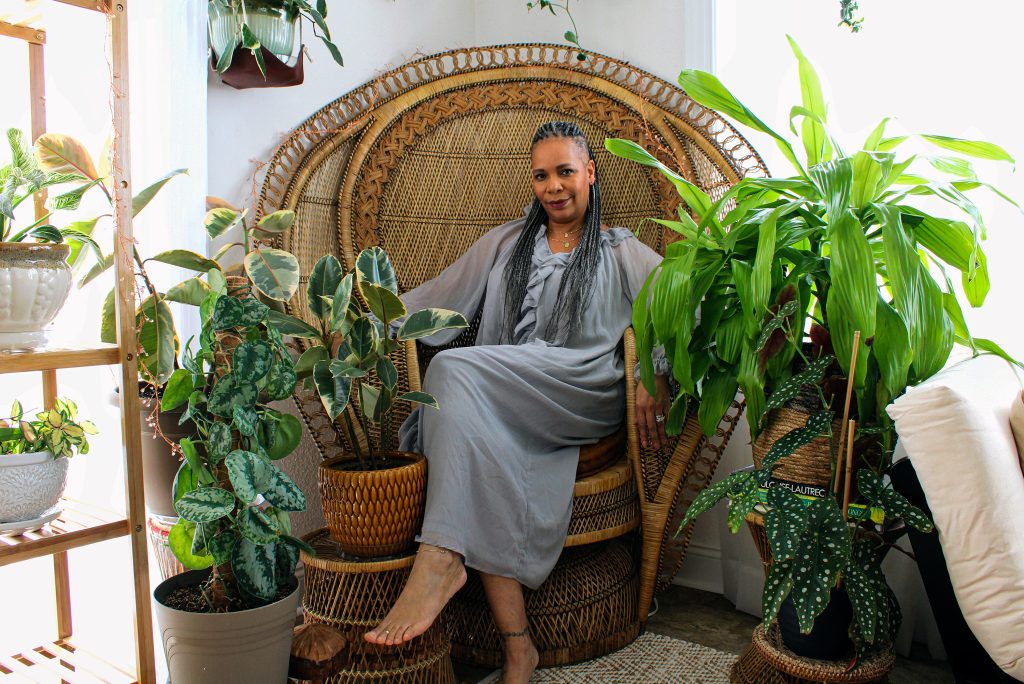
What’s the first thing you pick out when you’re designing a new space?
Most of the areas in my home are color-coordinated, usually with warm colors and the colors of nature. So I’m always drawn to a specific color or item first, whether it’s a pillow or a color that I haven’t used in my color palette already. If I’ve already used golds and browns, but I haven’t tapped in on the oranges that I know will compliment them, then that’s where I’ll go next. Then I base everything else around that color or that pillow and I just go from there.
What’s exciting about designing a space is that you don’t always have to go out and buy brand new things. So I will often shop my own home. Sometimes you can just move an item that you already have – or take something that you’ve put away and forgotten about and pull it out again. It will take on a whole new meaning and look completely different in a different space. So that is kind of how I approach design.
What makes a room feel like home to you?
I’m all about being comfortable in my space, but still having it look well put together. I like to know that when people come to my home, that they feel like they could put their feet up, but it’s still a place where they can still say, “Wow, this is so nice.” The pillows, the throw blankets, all those little accessory things that make you feel comfortable in a space are important to me. My pillow game is strong. My throw blanket game is, too.
I like to find pieces that your eye is drawn to. If I’m in my sunroom where most of my plants are – what I call the Garden of Eden – I know that wherever I sit, wherever I’ve placed my furniture, I have a view that is visually pleasing and comforting to me. It’s the same with your living space — wherever you sit, wherever you look, you should see something that is visually pleasing to you. That’s how I design my space.
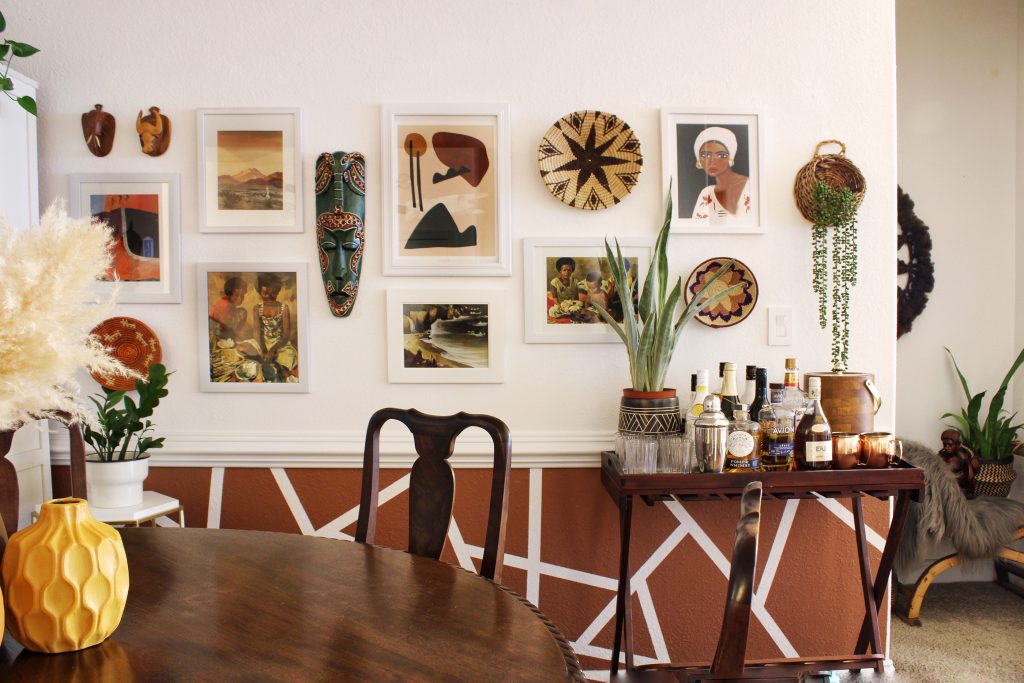
What about designing walls? How do you decide what to hang up?
If there are rules to designing a gallery wall, I don’t think I follow them. For me, gallery walls have to mean something, just like with tattoos. I like tattoos that mean something special to you when you look at them. So on my gallery wall, not only does it follow my color palette, but every piece is a representation of who I am.
One of my gallery walls, for instance, follows my roots and who I am as an African American. I am also from California. If you know anything about California, it’s mostly desert. I also have family in Arizona. So I love the desert part of it, but I also love the coast. I need water. So those things are represented here in this gallery wall. So every time I see it, it is very calming to me because it reminds me of who I am and where I’m from or where I’ve been.
What are some especially meaningful things you have hanging on your walls?
I have this gallery wall, which is made up of photos and different pieces of art. But then I also have a basket wall. I’m a child of the ‘70s and ‘80s. And my mother, who is my biggest influence, made a lot of baskets – I mean baskets for everything. So it is really part of my DNA. So it’s just a given to me to have some kind of basket on the wall.
When it comes to sustainability, I’m a firm believer that everything old will become new again. Everything comes back around. Whether it be home decor or clothes or hairstyles, sometimes things will come back around again that you thought were gone. You’ll see them again in a couple of years. So I take that approach to some of the things that adorn my walls.
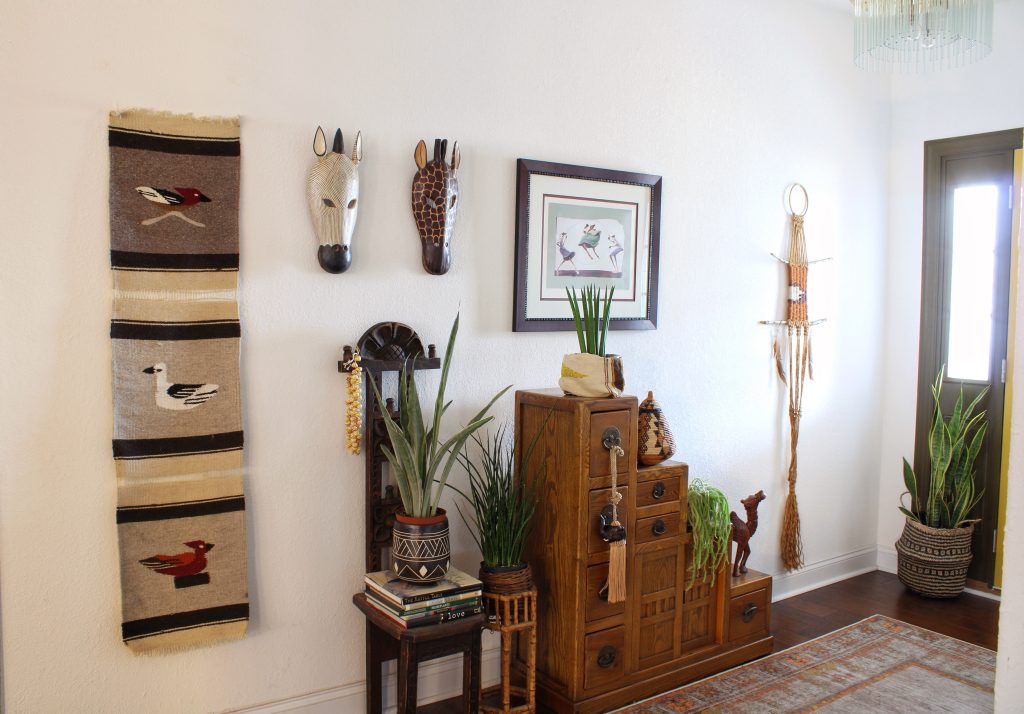
Are there any items in your home that speak to your African American or Californian roots?
When you walk into my home, you’ll see a set of masks in the entryway. Before my mother went blind, she won a trip to Africa back in the ‘90s. While she was in Senegal, she bought me these masks. I was newly married. She said that when she bought them, they told her that they were of a husband and wife and that you should put them by your door so that anybody that walks in knows that a married couple resides there, that it’s a loving household. So since the ‘90s, in every home that we’ve been in, those masks have been steadfast right by the front door. They are truly one of my prized possessions. I’ll probably pass them down to one of my girls or my son as they grow their own families.
When it comes to hanging photos on the wall, what makes the cut?
If it’s a personal family photo, I like to capture moments that are more candid and authentic. If I’m with my family and we’re all laughing at something or having a moment of that’s real, those are the photos that I like. Those are the photos that I would prefer to have in a frame or printed on glass so I can cherish that memory. I want pictures of my granddaughter when she’s laughing, not just standing there posing. Those are the types of pictures that make the cut for me. Those are the ones that mean something.
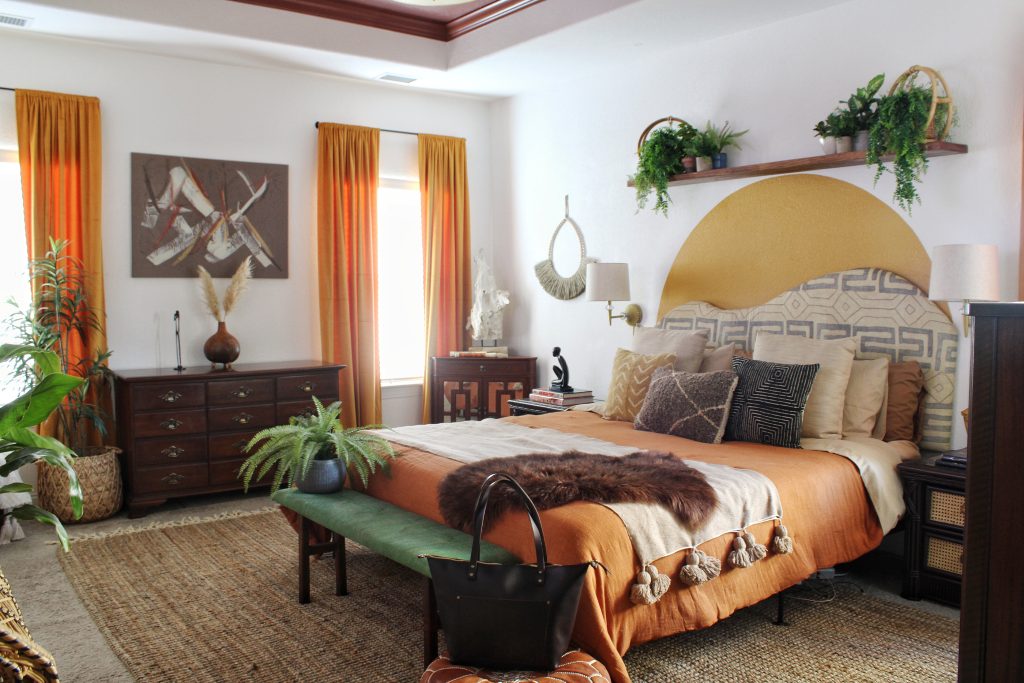
Do you have any secret thrifting or vintage shopping success tips you can share?
It really boils down to patience. You can go three or four times and not find a thing. And then all of a sudden you go and it’s a magical wonderland of pieces, or you just find that one special piece. I think that’s the challenge and the thrill of the hunt when it comes to thrifting; You’re going to have good moments and you’re going to have not-so-good moments.
I usually am looking for something specific. I might be looking for a piece to go on my mantle or on my bookshelf, or I may need a specific type of lamp. Sometimes I like to splurge on one bigger piece and then find thrifted vintage things to complement it. There can be days that I travel to three or four different thrift stores just to see what I can find. It really is all about just taking your time.
Here’s another tip: If you find a smaller thrift store and make a connection with the people that work there, you can build that relationship with them and learn things like when the trucks come in. So you know that every Tuesday, you need to get over there because that’s when they’re bringing in all the new stuff. And then it’s just a kind of weeding through it all.
Have you ever hit the thrifting jackpot?
When we moved here to Virginia in 2017, I believe that’s when peacock chairs and wicker furniture had gone around again and become very popular. I had always wanted one, but I could never find one at a thrift store. One day, I just happened to check some of the marketplaces online, and somebody was selling one. I think I drove 45 minutes to get it. It was only $60, and it even came with a side table. It was amazing that I could even find that particular type of wicker peacock chair for $60 that included a table. That’s the chair you’ll always see me sitting in on my Instagram feed and it’s the chair that everybody wants to sit in when they come to my house. They’re like, “Oh, that’s the chair! That’s the one I always see.” It was just a truly great find.
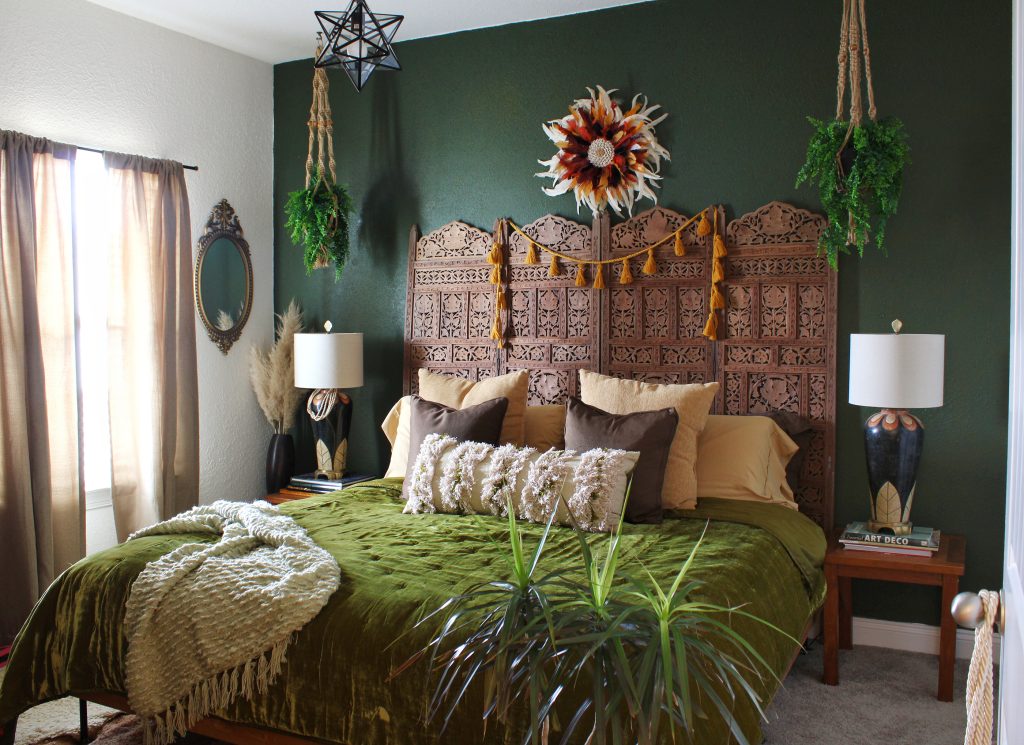
How does environmental sustainability come into play when it comes to home decor?
I really work hard to be better at living a more sustainable life. You know, the landfills are just overrun by pieces that just were made poorly and then just thrown in a landfill. It’s just taking up space and it’s really harming our planet. But then there are pieces out there, just like a good vintage classic car, that have good bones. Those are the pieces that you want to find, because those are the ones that are going to last the longest. You might find a lamp that is 30 years old and all you need to do is get it rewired. And then it’ll last you another 30 years! Those are the things that you want to find that really add value to your home and your life.
If you have a plant that has just died, don’t just throw it away. Put it in a compost bin and let it recycle back to the earth; That’s how plants work in nature anyway. If you can take those little steps to change your thought process and be more conscious about what we are doing to our planet, then we will all be much better off – I know my granddaughter and the generations after her will appreciate it.
You describe your home as a “tropical oasis.” Why are plants so important to your home decor process?
Not only do plants visually stimulate your mind and your mental health, but they are also visually appealing. They stimulate your senses. They give back to you what you give to them. I don’t have any pets or something that I can care for, other than my granddaughter. I know that if I care for a plant in the right way, it will give back to me just by showing off its beauty.
Plants really bring a sense of the outside in. They bring nature inside and bring life into your spaces. I think that’s why it became so popular for people to invest in plants during this pandemic, because people were stuck at home, they needed something to do. They needed something to fill their space and fill their hearts with something that gave them a bit of purpose. And plants really gave them that. I hope that continues, because plants can be a little trendy for some people, but plants really can add value to your world – not just to the quality of air in your home, but also to your quality of life and your mental state.
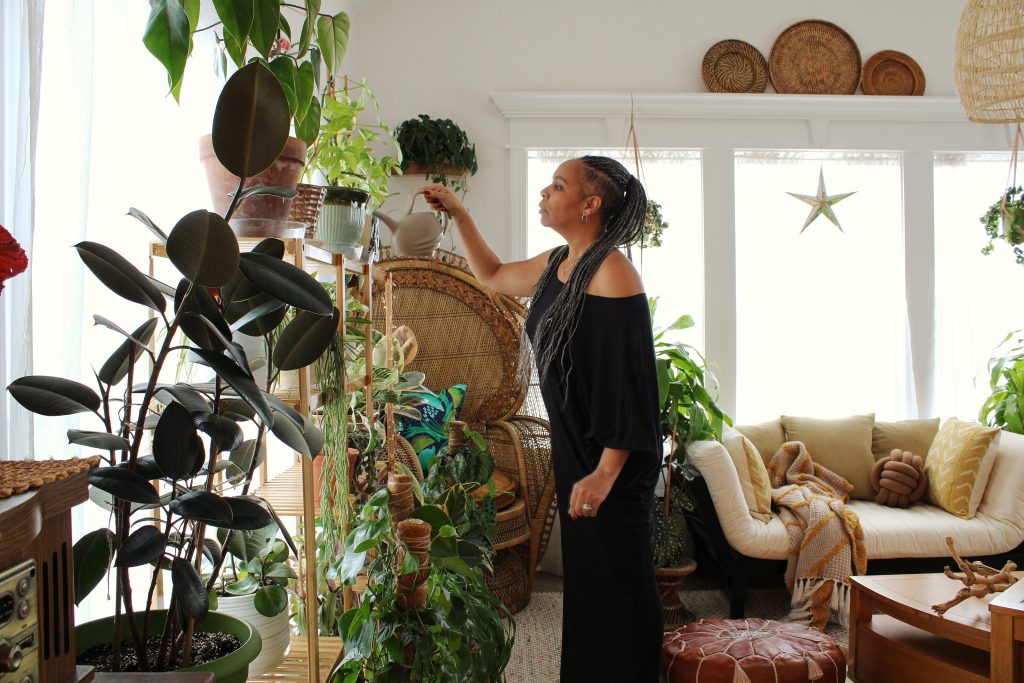
You encourage people to talk to their plants. Why?
There are so many studies that have come out about the effects of playing music for your plants and talking to your plants – especially with a woman’s voice. There is something about the pitch of a woman’s voice that helps stimulate the roots and in return, just really revives and really brings life to a plant. They are stimulated by the sound of your voice and the touch of your hand.
I walk by my plants every day, and if they’re looking beautiful and perked up, I let them know. I know people might think that sounds crazy, but I do. And more and more people that I’ve talked to have said, “I say hi to my plants. I talk to them. And I really feel them being perked up.” They really do respond to you in that way, to the tone of your voice.
Some of us have a hard time keeping plants alive. Any tips?
Don’t necessarily just follow the trends. Sometimes people will see a more experienced plant person that has these really fancy plants that are visually appealing and say, “Oh, wow. That’s so pretty. I’m going to get that!” But you have no idea how to take care of that plant. If you don’t take the time to say, “Oh, okay, this is a plant that I need to keep in this type of light. It needs this type of watering and this type of humidity,” your plant is going to wind up dying on you because you didn’t take the time to learn what it needs.
So start out with a plant that is very hard to kill, like a snake plant. Those are very hard to kill because they tolerate just about any light. They prefer a bright, indirect light, but they will tolerate a darker light and they don’t need to be watered so often.
I think we get all scared thinking that we don’t water them enough, that they need more water than they do. And they don’t. And that’s why a lot of people lose their plants: from overwatering them. You have to really pay attention to what that plant requires. If you can keep one plant alive, you can keep two or more alive. I have lost quite a few plants this winter season. I’m sad about it, but that’s all part of life. That’s part of nature. Trees fall in the forest and just die. There’s no rhyme or reason; They just get sick and that’s what happens. So you just do the best you can with what you’ve got.
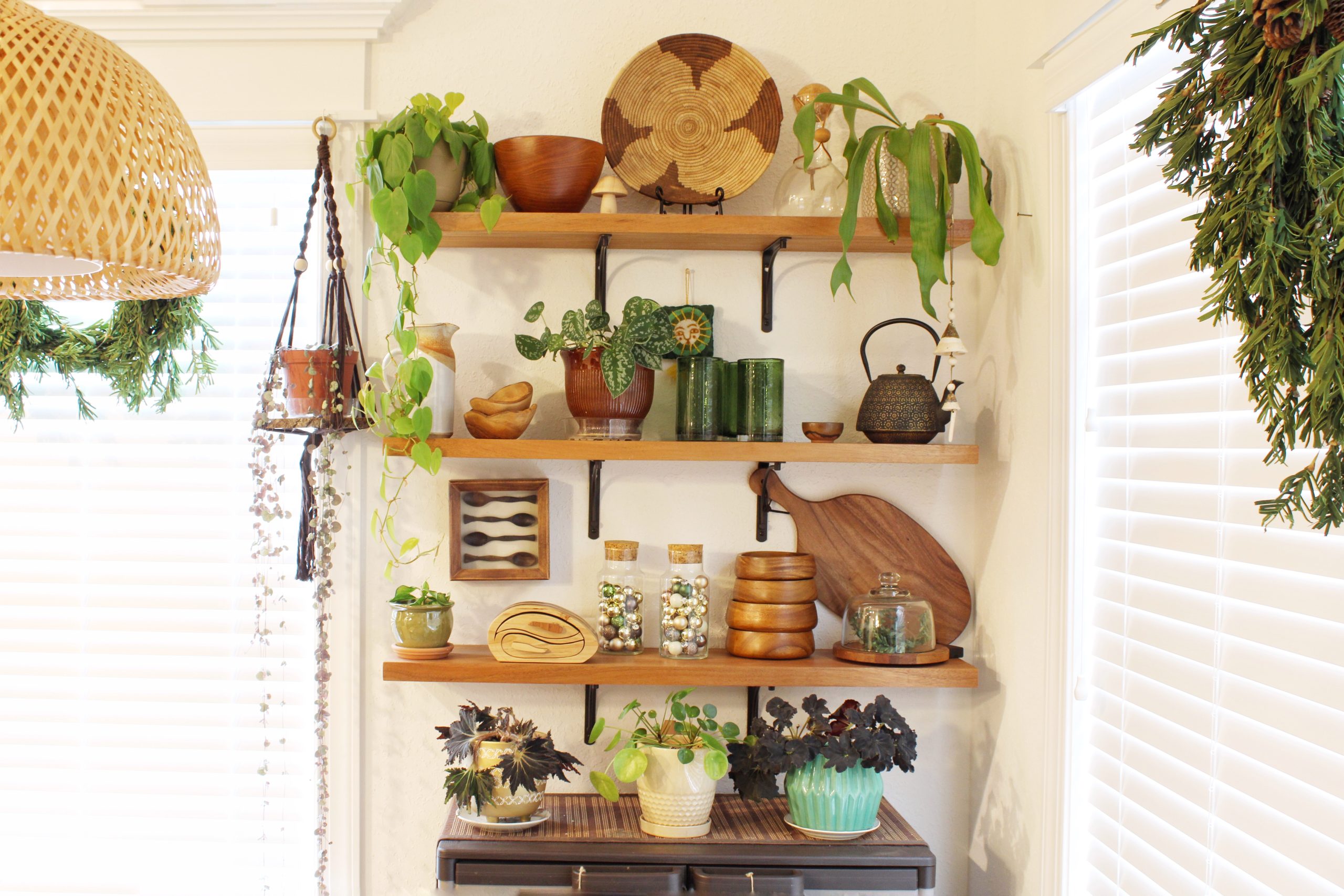

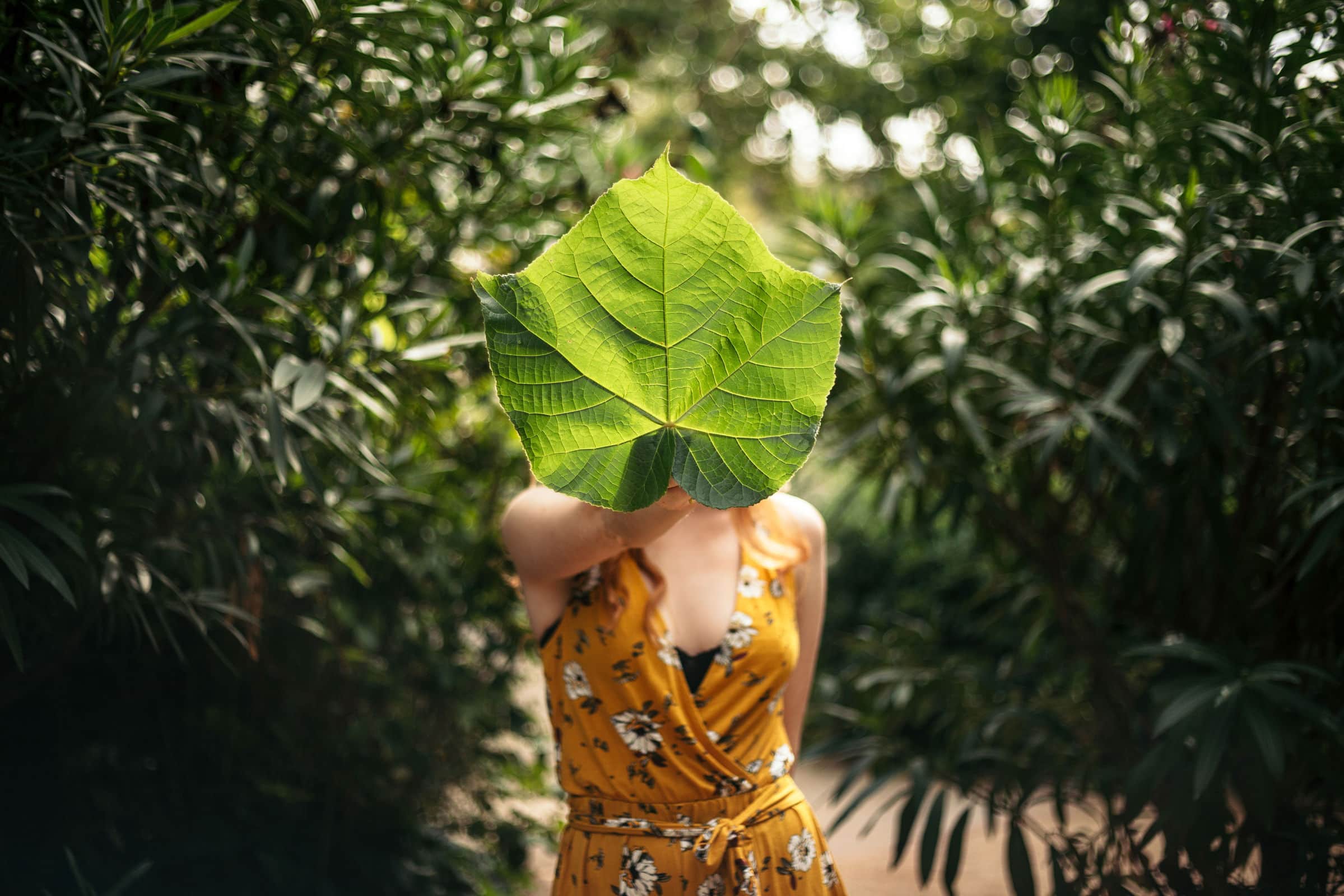



Comments